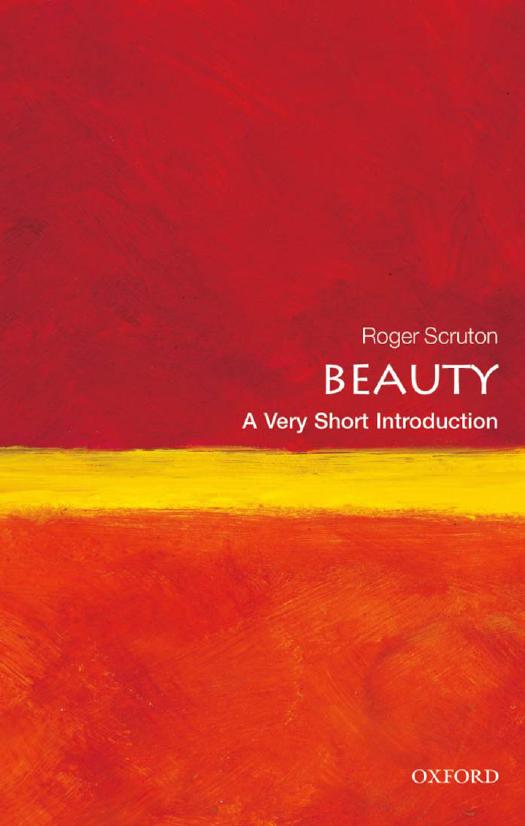Beauty: A Very Short Introduction by Roger Scruton

Author:Roger Scruton [Scruton, Roger]
Language: eng
Format: epub, pdf
ISBN: 9780199229758
Amazon: 0199229759
Publisher: Oxford University Press
Published: 2011-04-08T00:00:00+00:00
Content and form
That suggestion immediately raises a problem that has become familiar in aesthetics, in literary criticism, and in the study of the arts generally: how can you separate the content of a work of art from its form? And if you could separate the content, would that not just show that it is irrelevant to the aesthetic goal, no part of what the work really means?
Figure 12 Van Gogh, The Yellow Chair. A chair is a chair is a chair …
Suppose you ask me what is the content of Van Gogh’s famous painting of the yellow chair. What exactly does it mean? you ask: what am I supposed to understand, about this chair, or about the world, from looking at this picture? I might reply: it’s a chair, that’s all. But in that case what’s so special about the picture? Wouldn’t a photograph of a chair do just as well? Why travel all these miles to see a picture of a chair? I am likely to argue that this painting is saying something special about this particular chair, and also about the world as seen through the image of this chair. I might try to put my thoughts and feelings into words. ‘It is an invitation to see the life that spreads from people into all their products, the way in which life radiates from the meanest things, so that nothing is at rest, all is becoming.’ But couldn’t he have written that message on the bottom of the canvas? Why does he need a chair to communicate a thought like that? I am likely to respond that my words are only a gesture; that the real meaning of the painting is bound up with, inseparable from, the image—that it resides in the very shapes and colours of the chair, is inseparable from Van Gogh’s distinctive style, and cannot be translated completely into another idiom.
That kind of argument, whether about painting, about poetry or about music, is now familiar, and is grounded in our ordinary ways of talking about art. We want to say that works of art are meaningful—they are not just interesting forms in which we take an unexplained delight. They are acts of communication, which present us with a meaning; and this meaning must be understood. Often we will say of a performer, that he did not understand the role he was playing. We listen to abstract music, like the quartets of Bartók and Schoenberg, and perhaps say that we do not understand them. And all this reference to meaning and understanding suggests that works of art are communicating a content, maybe that each work of art—or at any rate each work of any note—has its own peculiar content, which we must understand if we are to appreciate the work and have a sense of its value. Some works have changed the way we see the world—Goethe’s Faust, for example, Beethoven’s late quartets, Shakespeare’s Hamlet, Vergil’s Aeneid, Michelangelo’s Moses, the Psalms of David and the Book of Job.
Download
Beauty: A Very Short Introduction by Roger Scruton.pdf
This site does not store any files on its server. We only index and link to content provided by other sites. Please contact the content providers to delete copyright contents if any and email us, we'll remove relevant links or contents immediately.
| Body Art & Tattoo | Calligraphy |
| Ceramics | Conceptual |
| Digital | Erotic |
| Film & Video | Glass |
| Graffiti & Street Art | Illuminations |
| Installations | Mixed Media |
| Mosaic | Prints |
| Public Art | Video Games |
Kathy Andrews Collection by Kathy Andrews(11730)
Thirteen Reasons Why by Jay Asher(8794)
The Red Files by Lee Winter(3368)
How to Do Nothing by Jenny Odell(3232)
The Genius of Japanese Carpentry by Azby Brown(3224)
Stacked Decks by The Rotenberg Collection(2811)
Tattoo Art by Doralba Picerno(2600)
Champions of Illusion by Susana Martinez-Conde & Stephen Macknik(2414)
The Artist's Way Workbook by Cameron Julia(2196)
The Art of Doom by Bethesda(2106)
Calligraphy For Dummies by Jim Bennett(1992)
Creative Character Design by Bryan Tillman(1888)
Botanical Line Drawing by Peggy Dean(1812)
Wall and Piece by Banksy(1781)
The Art of Creative Watercolor by Danielle Donaldson(1777)
One Drawing A Day by Veronica Lawlor(1767)
Art Of Atari by Tim Lapetino(1750)
Pillars of Eternity Guidebook by Obsidian Entertainment(1625)
Happy Hand Lettering by Jen Wagner(1558)
